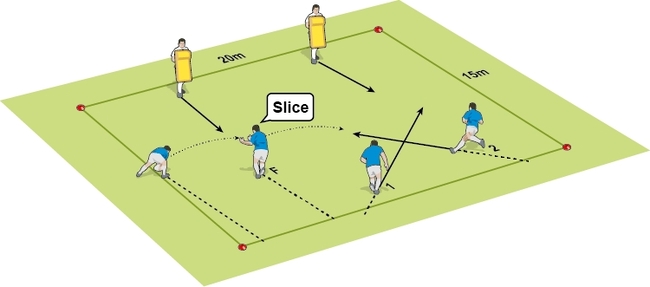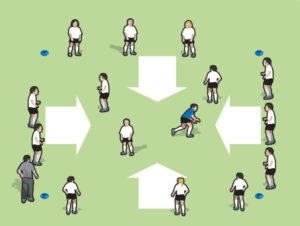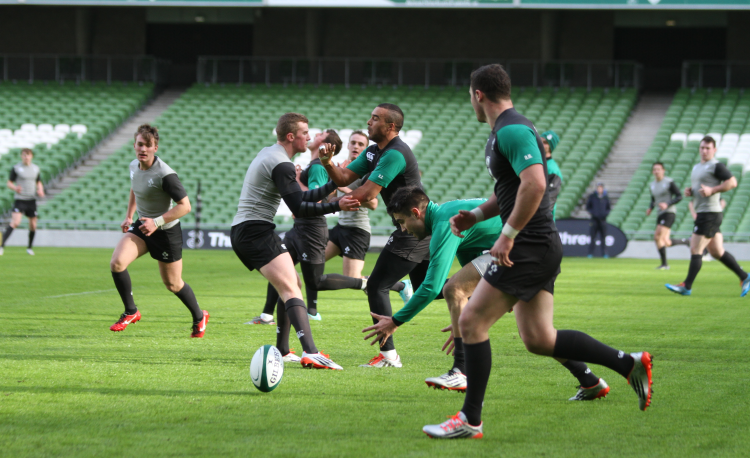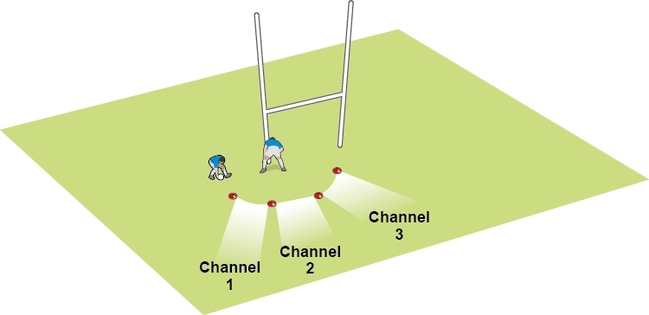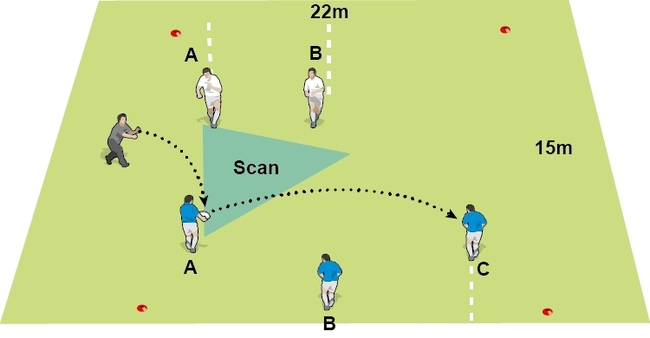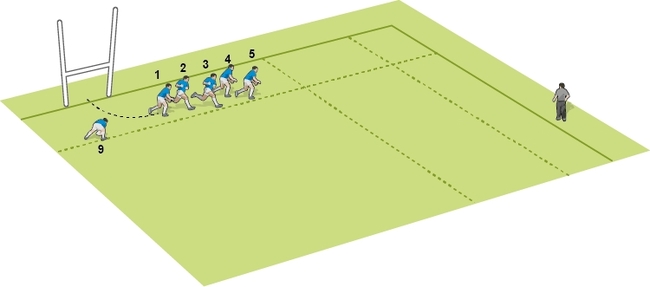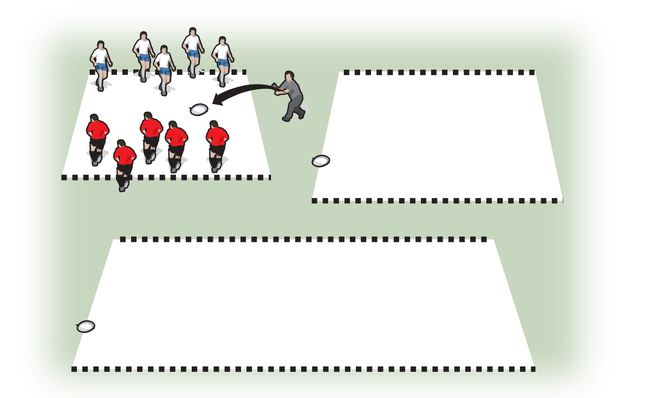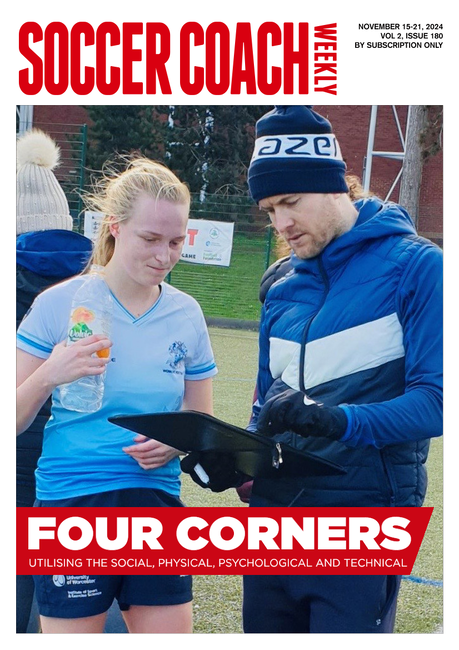3D touch rugby for better go forward
Change your try lines so they extend up the edges of the pitch to create a new sort of challenge for the players. The initial outcomes may seem strange, yet you may find the longer-term benefits help your team’s go forward.

Set up a pitch as in the diagram. The try lines “bleed” around the corners and start to extend up the touchline.
Use the rules for any version of touch rugby. For example, if there’s a touch, the ball carrier must pass the ball. If there are more than four touches, the ball goes to the other team.
However, a try can be scored at the ends of the pitch PLUS part of the way up the touchline. This creates a new sort of dynamic for both attackers and defenders.
You can change how far up the touchline this try line goes, but about 10m is the max.
HOW DOES THIS GAME CREATE GO FORWARD?
One of the main problems faced when coaching any player, and especially young players is to make them run forwards. They tend to see defenders in front of them, so run sideways and even backwards.
Perversely, this game rewards this action. It also rewards teams who pass the ball towards a try-line that’s to the side of the pitch.
The defenders must start defending the edges. Otherwise, they start leaking tries. To make this more of a consequence for the defenders, why not say that a try scored means the try-scorers keep the ball. Now the defenders must work even harder to stop tries being scored.
With the defenders covering the edges, that leaves gaps in the middle. There will be more spaces to go forward. The rewards begin to change.
The essential part of this game is to NOT suggest any tactics. Just let the players work out the challenge.
The downside is that players will think it’s okay to run to the edges of the pitch. They may then translate that into a game. However, games which have allowed forward passes, touch tackling or ban kicking aren’t like the real game either. But, like this game, they serve a purpose, which is to create new challenges for the players.
THE THOUGHT PROCESS
A change in attacking behaviours, that is the players attacking the edges, leads to a change in the defending behaviours. The defenders protect the edges and leave more spaces in the middle. That, in turn, leads to a change in attacking behaviours. The attackers will start to find gaps in the middle and run straight.
All the time, the players are working out for themselves how to solve the puzzle. It probably won’t happen immediately and it might take a number of matches over a number of months before it does.
DEVELOPMENTS AND ADJUSTMENTS

- You can use an alternative pitch which is a circle, with try lines starting at the halfway lines, or further back.
- You can say that a try scored on the edge means the ball is handed back to the opposition, whereas a try scored at the end means retaining possession.
Related Files
Newsletter Sign Up
Coaches Testimonials

Gerald Kearney, Downtown Las Vegas Soccer Club

Paul Butler, Florida, USA

Rick Shields, Springboro, USA

Tony Green, Pierrefonds Titans, Quebec, Canada
Subscribe Today
Be a more effective, more successful rugby coach
In a recent survey 89% of subscribers said Rugby Coach Weekly makes them more confident, 91% said Rugby Coach Weekly makes them a more effective coach and 93% said Rugby Coach Weekly makes them more inspired.
Get Weekly Inspiration
All the latest techniques and approaches
Rugby Coach Weekly offers proven and easy to use rugby drills, coaching sessions, practice plans, small-sided games, warm-ups, training tips and advice.
We've been at the cutting edge of rugby coaching since we launched in 2005, creating resources for the grassroots youth coach, following best practice from around the world and insights from the professional game.




